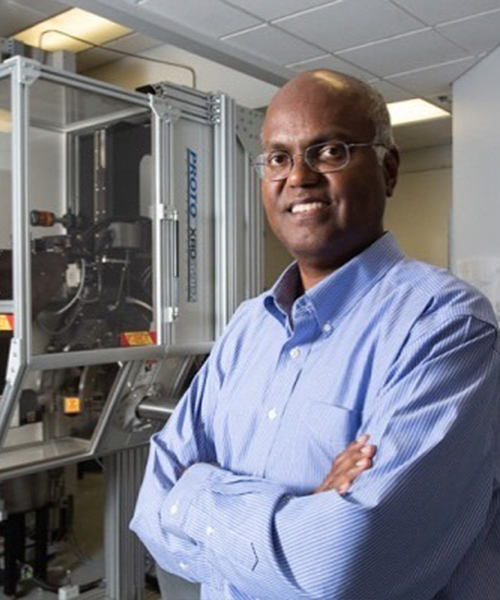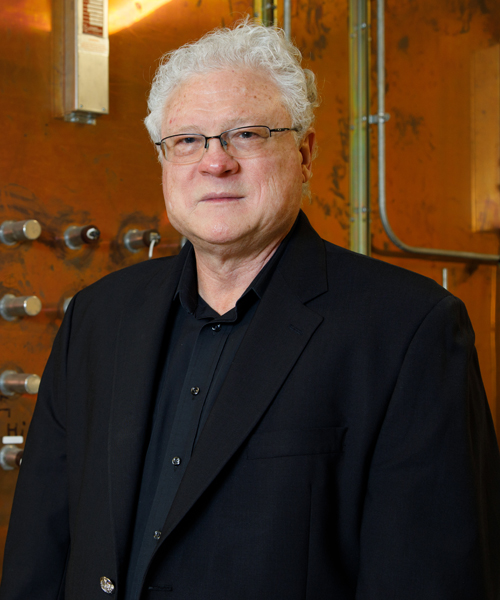TcSUH EventS
Special Seminar
Room Temperature Superconductivity: The “Hole” Story
by: Prof. Manuel de Llano
Date: Friday July 22, 2005
Time: 12:00 pm – 1:00 pm
Location: Houston Science Center – Building 593 — Room 102
Overview
By recognizing the vital importance of two-hole Cooper pairs in addition to the standard two-electron ones in a many-electron system, the concept of pairing has been re-examined with striking conclusions. Based on this, Bose-Einstein condensation (BEC) theory is generalized to include not boson-boson interactions (also neglected in BCS theory) but rather boson-fermion interaction vertices reminiscent of the Fröhlich electron-phonon interaction. Instead of phonons, the bosons in the generalized BEC theory are now both particle and hole Cooper pairs, and it reduces to all the old known statistical theories as special cases–including the so-called “BCS-Bose crossover†picture, which in turn generalizes BCS theory. With no adjustable parameters, the generalized BEC theory yields substantially higher transtion temperatures (including room-temperature superconductivity) without invoking non-phonon dynamics.
Back to TcSUH News & Events
Special Seminar
The Mixed State of BSCCO Visualized in Real Space with Single Vortex Resolution: Solid-Liquid Phase Transition and Magnetization Reversal
by: Alexander Schwarz
Date: Friday May 27, 2005
Time: 1:00 pm – 2:00 pm
Location: Houston Science Center – Building 593 — Room 102
Overview
It will be shown that vortex states in BSCCO can be visualized in real space with single vortex resolution using magnetic force microscopy. This technique is than applied to investigate two phenomena: vortex lattice melting and magnetization reversal. The former can be triggered by increasing either temperature or magnetic field. It turns out that the way how the solid-liquid phase transition occurs, appears to be quite different. In the latter case, a flux-antiflux boundary propagates through the sample. Particularly, it is possible to observe the annihilation of individual vortex-antivortex pairs.
Back to TcSUH News & Events
Special Seminar
The New Generation of Superconductor Electric Power Equipment
by: Alexis Malozemoff
Date: Monday May 23, 2005
Time: 4:30 pm – 5:30 pm
Location: Houston Science Center – Building 593 — Room 102
Overview
Rising energy demands, driven by population and economic growth, face an increasing clash with resource, land use and other environmental limits. Amidst the fierce debate over general energy policy priorities, there is broad consensus on the urgent need to modernize and strengthen the electric power grid. High Temperature Superconductor (HTS) wire is one of the keys to achieving these goals. Superconductivity is the amazing property of certain materials to conduct electricity with no resistive loss and high current density, enabling a new generation of electrical power equipment that is efficient, compact and very low in environmental impact. This vision has been enabled by the successful development and commercialization of robust, long-length, high performance HTS wires.
Examples of HTS applications, all in an advanced prototype stage, include:
- High-capacity, controllable HTS cables, which offer increased delivery capacity, essentially zero local environmental impact and the ability to offload overburdened sections of the grid;
- Dynamic HTS synchronous condensers offer large amounts of rapidly adjusted reactive power to improve grid stability and efficiency;
- Utility generators that produce more electricity for every unit of fuel consumed; and
- Fault current limiters and transformers that enable more reliable, lower cost operation of the grid.
This presentation will describe these applications, along with the superconductor wire that underlies them, and will assess their potential impact on the major grid challenges our society faces today.
Back to TcSUH News & Events

Special Seminar
Second-generation HTS Conductors
Date: Monday May 02, 2005
Time: 3:00 pm – 4:00 pm
Location: Houston Science Center – Building 593 — Room 102
Overview
High temperature superconductors (HTS) are nearing their commercial viability with the projected roll out of second-generation conductors within one year. Second-generation HTS conductors promise to meet the price-performance characteristics needed for widespread use of HTS. SuperPower has been working on the scale up of second-generation HTS since its formation in 2000. This presentation would discuss the R&D over the last 5 years at SuperPower that has resulted in successful scale up of high-throughput processes to produce 100 m lengths of second-generation HTS conductors. The R&D has been an integration of basic materials science, equipment engineering, and process development. Such an integration was applied to all eight processing steps involved in fabrication of second-generation HTS conductors that include substrate polishing, buffer deposition, superconductor deposition, slitting, and copper stabilizer application. In addition, novel characterization techniques were applied to develop off-line and on-line quality control tools. The presentation would provide the latest development in the scale up R&D of second-generation HTS conductors as well as detail the remaining challenges for successful use of HTS in commercial applications
Back to TcSUH News & Events

Bi-Weekly Seminar
Condensed Matter Physics Phenomena in Biological Systems
Date: Thursday April 21, 2005
Time: 12:00 pm – 1:00 pm
Location: Houston Science Center – Building 593 — Room 102
Overview
This talk will give a brief overview of condensed matter physics phenomena in biological systems, including diamagnetism, quantum tunneling in electron transfer reactions, excitons, charge density waves, and (albeit speculative) proposals of biological superconductivity. I will then, time permitting, discuss some of our own research, such as the production of nonlinear harmonics by enzyme complexes and motor proteins in the plasma membrane and the inner membranes of mitochondria. At low frequencies, we use a high-[Tc] SQUID to directly probe the current response, which greatly reduces electrode polarization effects. We have been studying, in vivo, budding yeast (Saccharomyces cerevisie) and, in vitro, cytochrome c, a mitochondrial membrane protein in the respiratory chain. Also of interest are the electric and magnetic properties of tubulin, which self-assembles to form microtubules in the cytoskeleton.
Back to TcSUH News & Events
